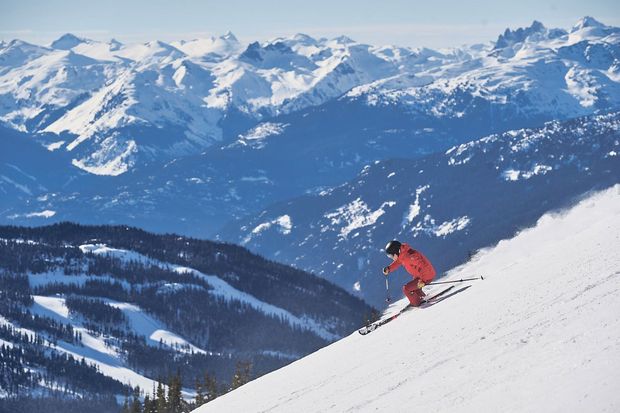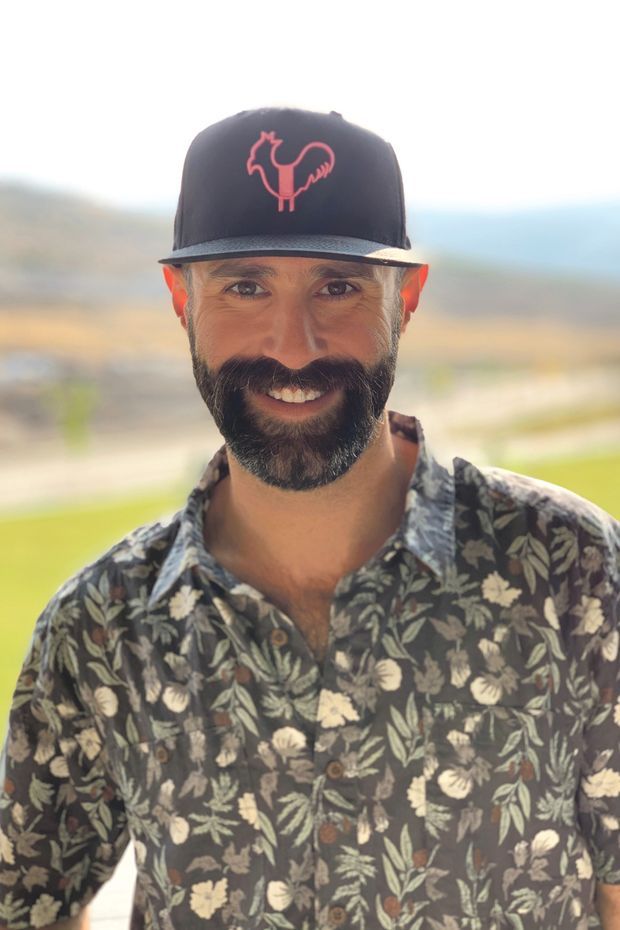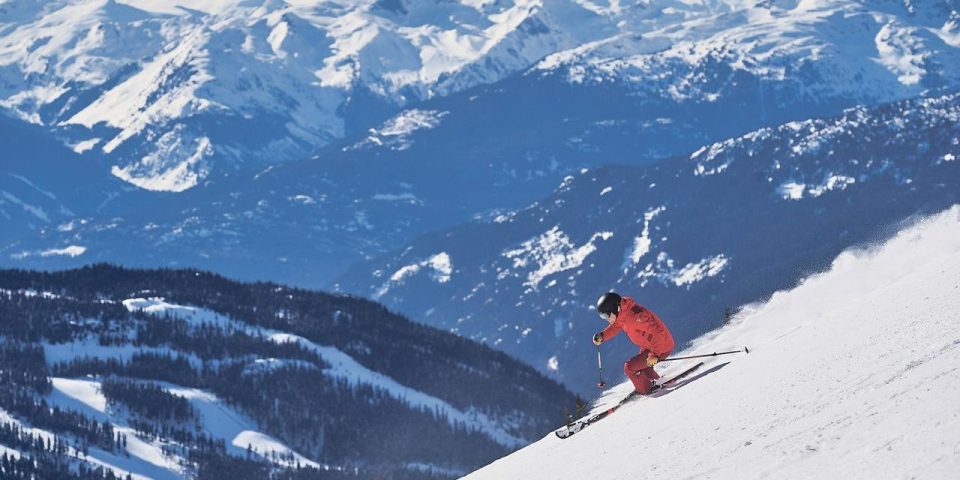
Rossignol has been at the forefront of competitive and recreational skiing for over a century.
Blake Jorgenson
Text size
Rossignol,
the French manufacturer of alpine, snowboard, and Nordic equipment as well as ski outerwear and accessories, has been a world leader in the field since its establishment more than a century ago.
It has been a pioneer on the technology front—it was one of the first companies to produce plastic skis—and it has long been the brand of champions. In 1937, the company scored its first significant victory when French racer
Émile Allais,
equipped with Rossignol Olympic 41 skis, won all three events at that year’s world championships in Chamonix, France.
Today, Rossignol works with world champions such as
Henrik Kristofferson,
Federica Brignone,
Petra Vlhová,
and
Thomas Dreßen
to develop cutting-edge, high-performance products that are rolled out to racers as well as to recreational skiers.
Jake Stevens,
Rossignol’s alpine category manager and member of the product development team, talks to us about the latest in ski equipment and the work behind it.
Rossignol introduced its first wood skis in 1907. In 1964, Strato, its first fiberglass ski, debuted. Through the years, what other materials have you worked with?
We have tried pretty much everything. Not everything works as well as you might think, while other materials you wouldn’t suspect, work great. Lately we have been playing a lot with a viscoelastic material. We are using it in a couple of different ways—in the tip and tail of the ski for vibration dampening or down the length of the ski like a stringer, separating the core in a system we call Line Control Technology (LCT). It’s cool because not only does it create a smoother, more balanced ski, but it also adds power.
When you’re choosing a material, what qualities do you look for?
The majority of material we use, other than wood or metal, is to make a more solid, balanced, smooth ski. It’s important to focus on more than building an extremely strong or stiff ski—this might be fun for [some] runs, but then your legs need a break, and your brain needs a beer.
Let’s talk about design and engineering. How do you make skis faster and safer?
Not only do we focus on the internal structure of the ski, but also on the side cut. This is something that should never be overlooked. It’s important to have a ski that enters and exits the turn with ease, but if the tip and tail are too large and the waist is too small, the ski will want to stay engaged with the turn and continue to accelerate. This is dangerous because if the ski wants to continue to turn, gravity will want to move your body down the hill, causing twisting and who knows what else. We focus on making the ski enter the turn clean and smooth by creating acceleration but allowing the rider to move easily into the transition or next turn.
What safety strides have you made in apparel?
We have been working on an airbag-vest technology with the brand In&motion that is pretty amazing. This is a vest worn by our athletes under their racing suits. When an athlete is falling/crashing, the computer system in the bag recognizes this and deploys, creating a bag of air for the athlete to land on. We see this technology saving a lot of athletes who are crashing at high speed. While it isn’t designed for recreational use yet, we are offering it to junior-level racing.

Jake Stevens is the company’s alpine category manager and helps design new products before they hit the slopes.
Sara Stevens, Saraelisedesign.com
What’s changed most in the industry in the last 10 years?
Probably the ski-core technology. Wood-core is still the best material to build a ski around, but other materials, such as Diago Fiber, which is wrapped around the wood, have been added. It is a carbon-fiber weave that acts like a blanket around the wood core, and it creates more rebound and power. Diago Fiber isn’t the most innovative tech the industry has come up with, but the point here is, wood core is what we have been using for 100-plus years, and the addition of other materials helps bolster technical advancements in the industry.
How quickly does innovation come to the ski-gear industry?
It is very rare to see something extremely industry-changing in the alpine ski world. All companies come up with something new every year. Technologies like LCT are the changes you see year to year from each brand.
How much safer has innovation in ski equipment made skiers today than they were, say, 25 years ago?
The biggest safety measures in the last 25 years probably have come with bindings. Better testing and a stronger understanding of the interface between the boot and the binding has resulted in a safer binding system, which protects the skier. Skiers tend to wear helmets now (you are almost an outcast if you don’t) and resorts take higher precautions to protect dangerous areas. Resort management has probably been the biggest safety improvement.
Several Olympians have won using Rossignol skis of various materials during the decades. What makes your skis different from others on the market?
It’s the amount of effort and pride we put into racing. Every person who works for our brand respects and believes in our racing department. A lot of the technologies and materials we use in our retail skis are born from the racing department. The majority of our employees have worked in one way or another for the race department. We are truly a racing company.
What’s next on the Rossignol drawing board?
We just launched a new Freeride line, or Ridefree as we like to call it, called Black Ops. We are focused on developing some real cool new technology for our racing athletes and some secret stuff that will be making its way to the retail world in the next year or two. It’s important for us to pull our technology from racing to retail. You will continue to see things like LCT arrive in the retail world because the best athletes in the world approve and have success with them.
This article first appeared in the Winter 2020 issue of Mansion Global Experience Luxury.


